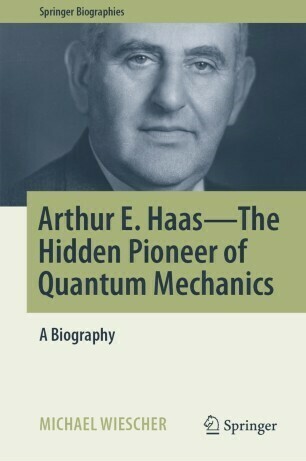
Michael Wiescher, Freimann Professor of Physics, has published the biography Arthur E. Haas – The Hidden Pioneer of Quantum Mechanics at Springer. A German version is being published by the LIT Verlag in Vienna.
Arthur E. Haas came to the University of Notre Dame as a professor of physics in 1936 on the recommendation of Albert Einstein. At the time, he was a well-known theoretical physicist who escaped from the growing dangers of fascism in Austria/Germany and came to the United States to build a new life. During his early career in Austria he had mainly focused on fundamental questions in Quantum Physics; he had predicted the Bohr radius of the hydrogen atom two years before Niels Bohr, a result that was discussed but then dismissed at the 1st Solvay conference in Brussels. Haas later held academic positions in Leipzig and Vienna, where he turned his attention to the question about the actual physical meaning of the fundamental constants that dictate the new physics of the cosmos and microcosmos. At Notre Dame he promoted the new field of Cosmology and organized together with Father Georges Lemaitre the world’s first conference on Cosmology in 1938. With the occupation of Austria by Germany he helped numerous of his former colleagues and friends in physics and mathematics to immigrate to the United States and assume new positions at Notre Dame and other universities.
Haas died in 1942 after suffering a stroke almost immediately after having presented his new results on cluster systematics in nuclei at a conference in Chicago. He was the first theoretical physicist at Notre Dame. Haas's life and career not only reflect the exciting developments in modern physics during the early decades of the twentieth century, but also the political turbulences and difficulties science and scientists had to face. The book provides new insight on the struggles of science in Europe, and paints a picture of the close network the scientists maintained during these years of struggle. The book also provides insight about the role and expectations for science at the small Catholic university that Notre Dame was at the time. These were the first steps towards becoming a modern research institution.
The biography is largely based on unpublished letters and documents that were provided by the Haas family, the Notre Dame Archives, and the Archives of the Academy of Sciences in Vienna.